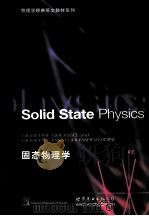《LOW TEMPERATURE SOLID STATE PHYSICS SOME SELECTED TOPICS》
| 作者 | H.M. ROSENBERG 编者 |
|---|---|
| 出版 | OXFORD AT THE CLARENDON PRESS |
| 参考页数 | 420 |
| 出版时间 | 1963(求助前请核对) 目录预览 |
| ISBN号 | 无 — 求助条款 |
| PDF编号 | 813332178(仅供预览,未存储实际文件) |
| 求助格式 | 扫描PDF(若分多册发行,每次仅能受理1册) |
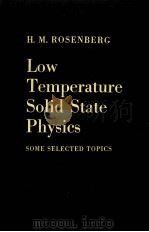
1.SPECIFIC HEATS1
1.1.INTRODUCTION1
1.2.THE LATTICE SPECIFIC HEAT3
1.3.The Einstein theory3
1.4.The Debye theory5
1.5.Some practical points7
1.6.The Debye θ9
1.7.Wavelength of the lattice vibrations at low temperatures9
1.8.Deviations from the Debye theory11
1.9.THE SPECIFIC HEAT OF THE ELECTRONS13
1.10.The specific heat of a metal at low temperatures16
1.11.EXPERIMENTAL RESULTS FOR THE ELECTRONIC SPECIFIC HEAT16
1.12.The alkali metals17
1.13.The divalent metals17
1.14.The transition metals of the first group18
1.15.The electronic specific heat of alloys20
1.16.The lattice specific heat of alloys21
1.17.THE SPECIFIC HEAT OF SEMICONDUCTORS21
1.18.ANOMALOUS SPECIFIC HEATS23
1.19.The Schottky specific heat23
1.20.Entropy associated with a Schottky anomaly27
1.21.Experiments on the Schottky specific heat28
1.22.The nuclear specific heat30
1.23.The specific heat associated with co-operative phenomena32
2.THERMAL EXPANSION36
2.1.INTRODUCTION36
2.2.A simple model of the expansion mechanism36
2.3.Thermodynamic derivation36
2.4.EXPERIMENTAL RESULTS39
2.5.Considerations of thermal expansion in the design of apparatus41
3.THERMAL CONDUCTIVITY OF NON-METALS43
3.1.INTRODUCTION43
3.2.THE DEBYE THEORY OF LATTICE CONDUCTIVITY44
3.3.Anharmonicity45
3.4.THE THERMAL CONDUCTIVITY OF CRYSTALS46
3.5.The vibrational spectrum of a discrete lattice47
3.6.Umklapp-processes49
3.7.Boundary scattering53
3.8.Point defect and isotope scattering54
3.9.Dislocation scattering55
3.10.A SUMMARY OF THE BEHAVIOUR OF THE PHONON CONDUCTIVITY58
3.11.COMPARISON OF THEORY WITH EXPERIMENT59
3.12.Umklapp-processes and boundary scattering59
3.13.Isotope scattering62
3.14.Defect scattering;irradiation damage64
3.15.Dislocations66
3.16.Glasses and polycrystalline specimens67
4.ELECTRICAL CONDUCTIVITY OF METALS AND ALLOYS68
4.1.INTRODUCTION68
4.2.The electron distribution69
4.3.The basic concepts of conductivity71
4.4.Effect of the zone boundary73
4.5.Resistivity mechanisms74
4.6.THE RESIDUAL RESISTIVITY76
4.7.Effect of impurity atoms;the valency rule76
4.8.Variation of the amount of a given impurity77
4.9.Alloys containing the transition elements79
4.10.Effect of ordering and phase transformation80
4.11.Determination of purity from residual resistance measurements80
4.12.Resistivity of lattice imperfections81
4.13.Resistivity of dislocations and stacking faults82
4.14.Recovery of the resistivity after irradiation or deformation85
4.15.Resistivity minima and maxima87
4.16.THE TEMPERATURE-DEPENDENT RESISTIVITY91
4.17.Small-angle scattering92
4.18.The T5 law93
4.19.The Bloch-Grüneisen function and θR93
4.20.Umklapp-processes96
4.21.Resistivity of the transition metals97
4.22.Electron-electron scattering97
4.23.RESISTIVITY OF THIN FILMS AND RODS98
4.24.The magneto-resistance size effect100
4.25.THE ANOMALOUS SKIN EFFECT102
4.26.Determination of the shape of the Fermi surface104
4.27.MAGNETO-RESISTIVITY105
4.28.Kohler's rule106
4.29.Magneto-resistance of a free electron metal108
4.30.Fermi surface investigations by magneto-resistance measurements108
5.THERMAL CONDUCTIVITY OF METALS,ALLOYS,AND SEMICONDUCTORS111
5.1.INTRODUCTION111
5.2.THE ELECTRONIC THERMAL RESISTIVITY111
5.3.The Wiedemann-Franz law112
5.4.The impurity resistivity113
5.5.Resistivity due to phonon scattering113
5.6.Modifications to the theory116
5.7.Comparison with experiment117
5.8.The temperature variation of the Lorenz number120
5.9.THE LATTICE THERMAL RESISTIVITY OF METALS120
5.10.Separation of the lattice and the electronic conductivities122
5.11.The thermal conductivity of alloys124
5.12.Low-conductivity alloys124
5.13.THE THERMAL CONDUCTIVITY OF SUPERCONDUCTORS125
5.14.The thermal conductivity of superconductors in the intermediate state131
5.15.The thermal switch134
5.16.THE STUDY OF IMPERFECTIONS IN METALS BY THERMAL CONDUCTION EXPERIMENTS136
5.17.Experiments on alloys137
5.18.Experiments on superconductors140
5.19.THE THERMAL CONDUCTIVITY OF SEMI-METALS142
5.20.The thermal conductivity of semiconductors143
5.21.OTHER THERMAL CONDUCTIVITY EXPERIMENTS145
6.SUPERCONDUCTIVITY147
6.1.INTRODUCTION147
6.2.THE BASIC PROPERTIES OF SUPERCONDUCTORS147
6.3.The critical field149
6.4.The Meissner effect152
6.5.THERMODYNAMICS OF A SUPERCONDUCTOR156
6.6.The specific heat157
6.7.The two-fluid model158
6.8.The specific heat at very low temperatures160
6.9.Thermodynamics applied to the mechanical properties162
6.10.PENETRATION EFFECTS163
6.11.The London theory163
6.12.Measurements of the penetration depth166
6.13.HIGH-FREQUENCY EFFECTS167
6.14.The surface reactance;penetration depth168
6.15.High-frequency resistivity169
6.16.THE CRITICAL FIELD OF SMALL SPECIMENS171
6.17.THE INTERMEDIATE STATE174
6.18.The free energy of the intermediate state176
6.19.Surface energy176
6.20.The experimental observation of the intermediate state177
6.21.Measurements of δ179
6.22.Nucleation of superconducting regions179
6.23.SUPERCONDUCTING ALLOYS AND COMPOUNDS180
6.24.EXPERIMENTS WHICH ASSIST TOWARDS OUR UNDERSTANDING OF THE SUPERCONDUCTING STATE185
6.25.The influence of the lattice;the isotope effect185
6.26.The electron coherence length186
6.27.The energy gap188
6.28.THE MODERN THEORY OF SUPERCONDUCTIVITY188
6.29.Electron-phonon interaction189
6.30.Electron pairs190
6.31.The superconducting ground state193
6.32.Excited states and the energy gap194
6.33.Density of states of a superconductor194
6.34.Zero resistance195
6.35.The energy gap above 0° K196
6.36.EXPERIMENTS TO MEASURE THE ENERGY GAP198
6.37.Infra-red transmission and reflection198
6.38.Electron tunnelling experiments199
6.39.SUPERCONDUCTING DEVICES204
6.40.Solenoids205
6.41.The cryotron205
6.42.Superconducting bolometers209
7.SEMICONDUCTORS210
7.1.GENERAL PRINCIPLES;PURE SEMICONDUCTORS210
7.2.Impurity levels211
7.3.Multiple levels and compensation213
7.4.Data which determine the properties of a semiconductor214
7.5.The Hall coefficient214
7.6.The Fermi energy216
7.7.Carrier excitation219
7.8.THE MOBILITY222
7.9.Scattering by thermal vibrations223
7.10.Scattering by ionized impurities224
7.11.Scattering by neutral impurities225
7.12.The combination of mobilities226
7.13.The Hall mobility226
7.14.The band structure of semiconductors228
7.15.The Hall effect for two types of carriers230
7.16.EXPERIMENTS ON THE HALL EFFECT AND THE RESISTIVITY230
7.17.Degeneracy232
7.18.Resistivity233
7.19.Mobility measurements235
7.20.Impurity conduction237
7.21.CYCLOTRON RESONANCE240
7.22.Experimental results241
7.23.Width of the resonance line243
7.24.OPTICAL AND INFRA-RED ABSORPTION244
7.25.Intrinsic absorption245
7.26.Carrier absorption248
7.27.Absorption due to localizedi states249
7.28.Lattice absorption252
7.29.Photoconductivity252
7.30.Carrier trapping and recombination254
7.31.Infra-red detectors257
7.32.'HOT'CARRIERS AND IMPACT IONIZATION257
7.33.Factors affecting the breakdown259
7.34.The 'hot'-carrier system260
7.35.MAGNETIC FIELD EFFECTS261
8.THERMO-ELECTRICITY262
8.1.INTRODUCTION262
8.2.Low-temperature technique264
8.3.Elementary theory264
8.4.Modifications for a real metal266
8.5.EXPERIMENTAL RESULTS;THE NOBLE METALS267
8.6.The alkali metals268
8.7.PHONON DRAG269
8.8.EFFECT OF IMPURITIES AND DEFECTS ON THE THERMOPOWER272
8.9.Low-temperature thermocouples275
8.10.THERMOPOWER OF SUPERCONDUCTORS276
8.11.THERMO-ELECTRIC EFFECTS IN SEMICONDUCTORS278
8.12.Phonon drag in semiconductors280
8.13.Boundary scattering283
8.14.Effect of the carrier concentration283
9.MAGNETIC PROPERTIES285
9.1.INTRODUCTION285
9.2.Diamagnetism286
9.3.PARAMAGNNETISM287
9.4.Russell-Saunders coupling;Hund's rules289
9.5.Paramagnetic susceptibility;Curie's law291
9.6.The internal electric field292
9.7.Susceptibility of the iron group294
9.8.Susceptibility of the rare-earth group296
9.9.Level splittings;Kramers theorem298
9.10.The crystal symmetry298
9.11.Susceptibility at very low temperatures;Van Vleck paramagnetism301
9.12.Salts commonly used in experiments304
9.13.Anisotropy306
9.14.INTERACTIONS AT VERY LOW TEMPERATURES307
9.15.Dipole-dipole interaction307
9.16.Exchange interaction307
9.17.Nuclear interactions;magnetic hyperfine structure308
9.18.Nuclear quadrupole interaction308
9.19.FERROMAGNETISM309
9.20.Anti-ferromagnetism310
9.21.Susceptibility of an anti-ferromagnetic substance below the Néel temperatur313
9.22.Ferrimagnetism314
9.23.SUSCEPTIBILITY OF GASES318
9.24.A SUMMARY OF SUSCEPTIBILITY BEHAVIOUR318
9.25.PARAMAGNETIC RELAXATION320
9.26.Relaxation processes321
9.27.The spin-lattice relaxation time323
9.28.Thermodynamics of paramagnetic substances326
9.29.PARAMAGNETIC RESONANCE328
9.30.Low-temperature experiments331
9.31.Methods for determining energy splittings and for identifying the levels331
9.32.Determination of the number of ions per unit cell335
9.33.Experiments on other paramagnetic systems336
9.34.Hyperfine structure337
9.35.Double resonance experiments339
9.36.The maser340
9.37.AN ASSESSMENT OF THE VARIOUS METHODS FOR DETERMINING MAGNETIC DATA342
9.38.SELECTION OF SUITABLE SALTS FOR ADIABATIC DEMAGNETIZATION344
10.THE SUSCEPTIBILITY OF METALS-THE DE HAAS-VAN ALPHEN EFFECT348
10.1.INTRODUCTION348
10.2.THEORY349
10.3.Quantized states350
10.4.The effect of increasing the magnetic field351
10.5.Conditions required to observe the effect354
10.6.EXPERIMENTAL RESULTS356
10.7.OTHER OSCILLATORY MAGNETIC EFFECTS357
11.MECHANICAL PROPERTIES359
11.1.INTRODUCTION359
11.2.THE ELASTIC MODULI360
11.3.THE TENSILE PROPERTIES OF METALS AT LOW TEMPERATURES363
11.4.Metals which remain plastic at low temperatures364
11.5.Strain-rate experiments366
11.6.The fracture strength369
11.7.Brittle fracture370
11.8.Serrated stress-strain curves372
11.9.CREEP OF METALS AT LOW TEMPERATURES373
11.10.The exhaustion theory374
11.11.The tunnel effect377
11.12.FATIGUE AT Low TEMPERATURES378
11.13.INTERNAL FRICTION AT Low TEMPERATURES382
11.14.Relaxation processes383
INDEX OF DATA387
AUTHOR INDEX AND BIBLIOGRAPHY392
SUBJECT INDEX403
1963《LOW TEMPERATURE SOLID STATE PHYSICS SOME SELECTED TOPICS》由于是年代较久的资料都绝版了,几乎不可能购买到实物。如果大家为了学习确实需要,可向博主求助其电子版PDF文件(由H.M. ROSENBERG 1963 OXFORD AT THE CLARENDON PRESS 出版的版本) 。对合法合规的求助,我会当即受理并将下载地址发送给你。
高度相关资料
-
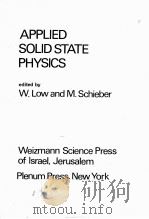
- APPLIED SOLID STATE PHYSICS
- PLENUM PRESS
-
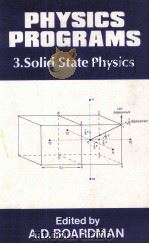
- Physics Programs 3 Solid State Physics
- 1980 John Wiley & Sons Ltd
-

- INTRODUCTORY SOLID STATE PHYSICS
- 1990 TAYLOR & FRANCIS
-
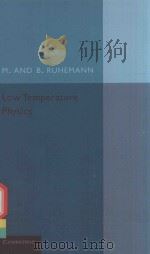
- LOW TEMPERATURE PHYSICS
- 1937 CAMBRIDGE AT THE UNIVERSITY PRESS
-
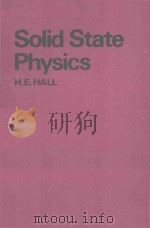
- SOLID STATE PHYSICS
- 1965 PHYSICS DEPARTMENT FACULTY OF SCIENCE
-

- SOLID STATE PHYSICS
- 1976 BROOKS COLE THOMSON LEARNING
-

- Solid State Physics
- 1968 MACMILLAN AND COMPANY LIMITED
-
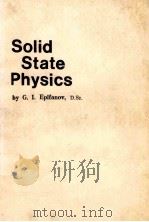
- Solid State Physics
- 1979 Mir Publishers
-
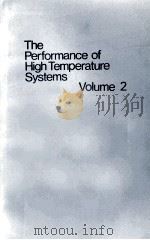
- THE PERFORMANCE OF HIGH TEMPERATURE SYSTEMS VOLUME 2
- 1969 GORDON AND BREACH
-
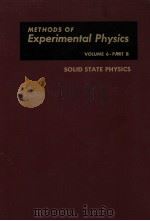
- SOLID STATE PHYSICS
- 1959 ACADEMIC PRESS
-

- LOW TEMPERATURE SOLID STATE PHYSICS SOME SELECTED TOPICS
- 1963 OXFORD AT THE CLARENDON PRESS
-

- SOLID-STATE PHYSICS
- 1976 SPRINGER-VERLAG
-
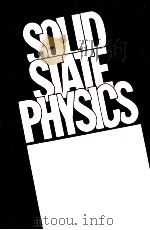
- SOLID STATE PHYSICS
- 1990 TATA MCGRAW HILL PUBLISHING COMPANY LIMITED
提示:百度云已更名为百度网盘(百度盘),天翼云盘、微盘下载地址……暂未提供。➥ PDF文字可复制化或转WORD
